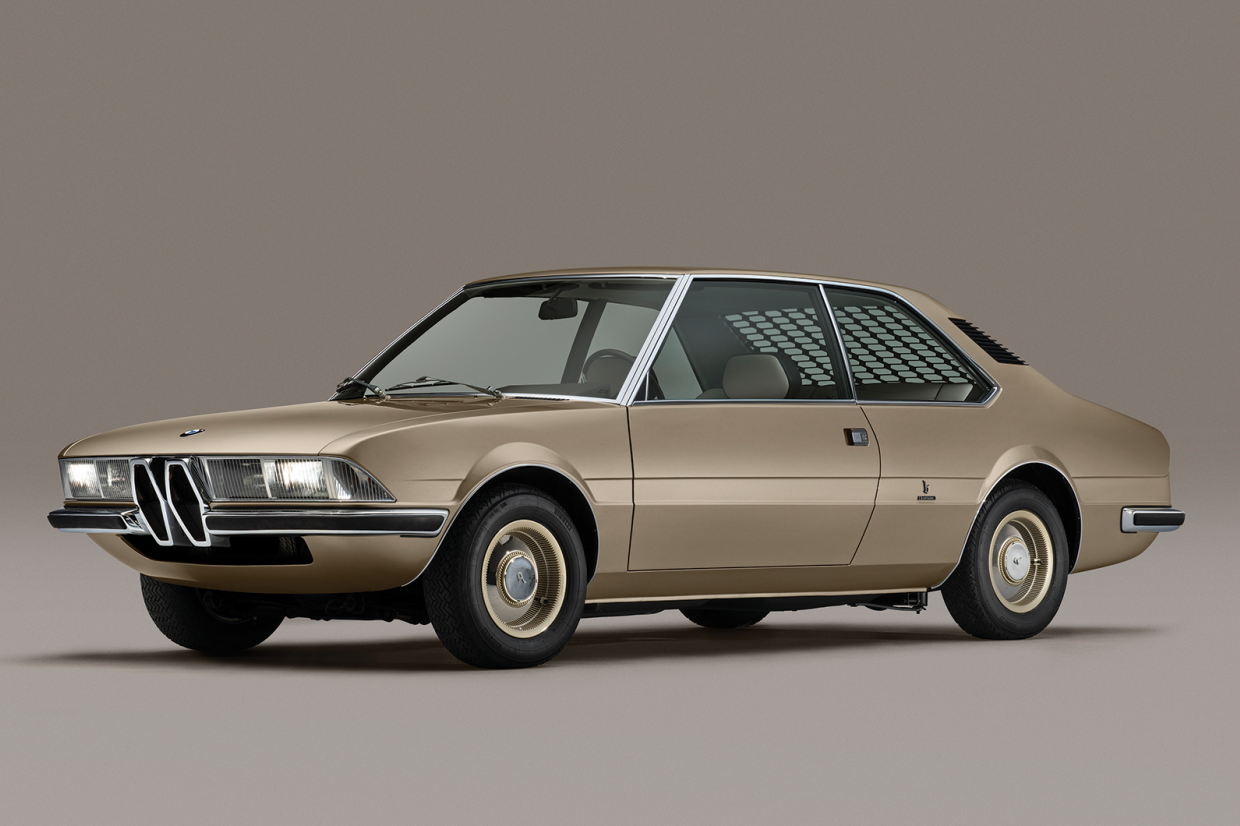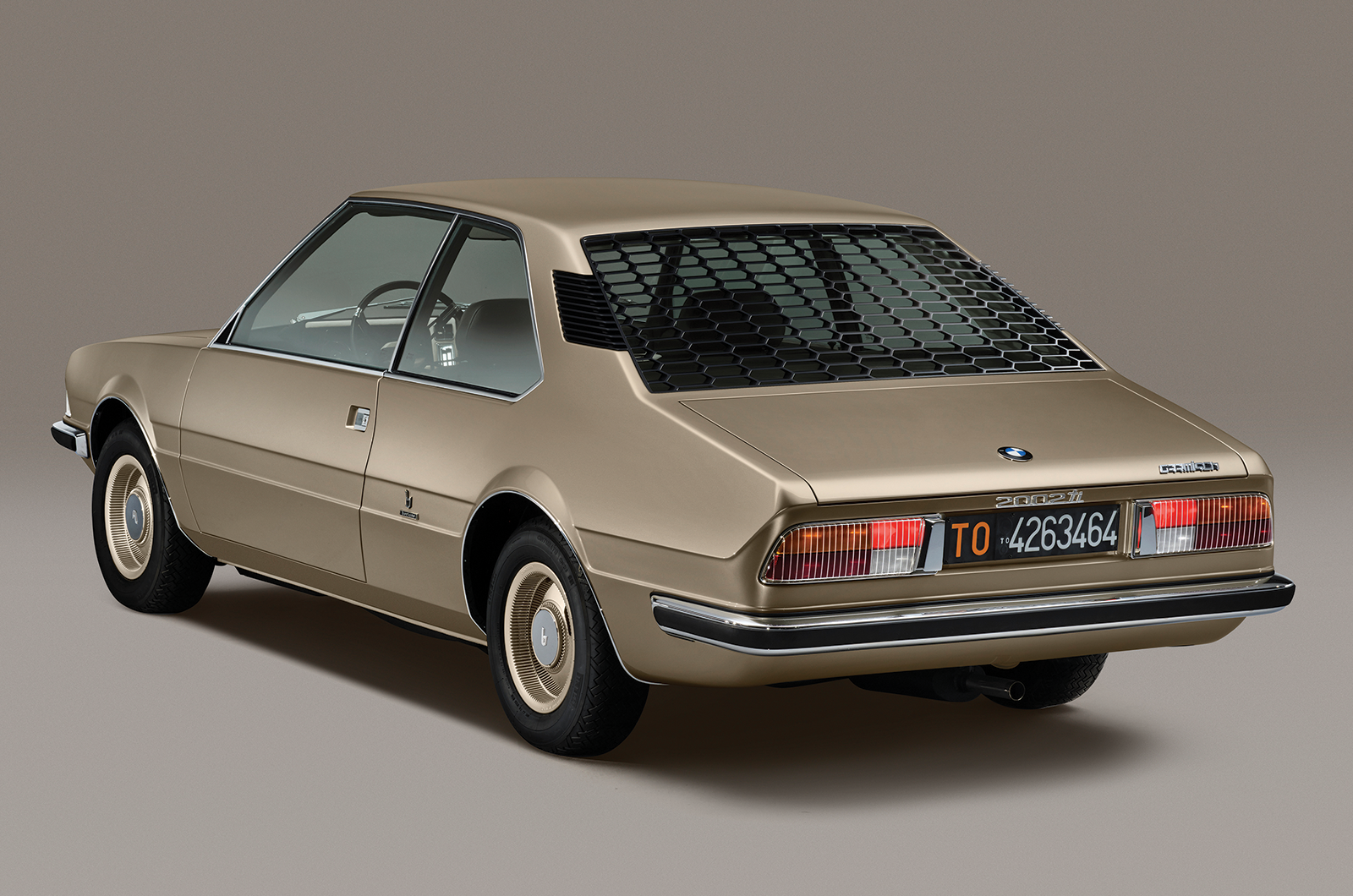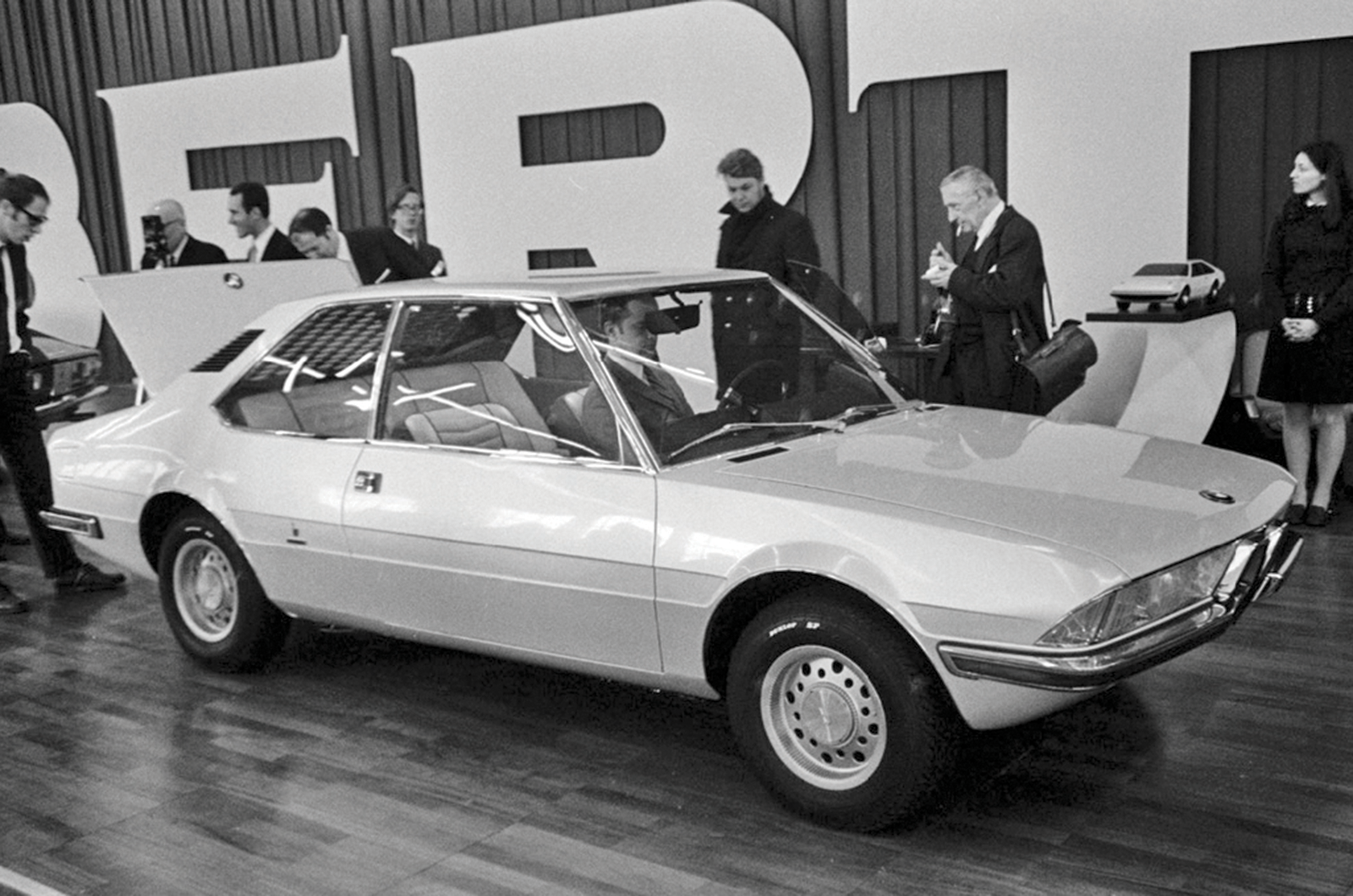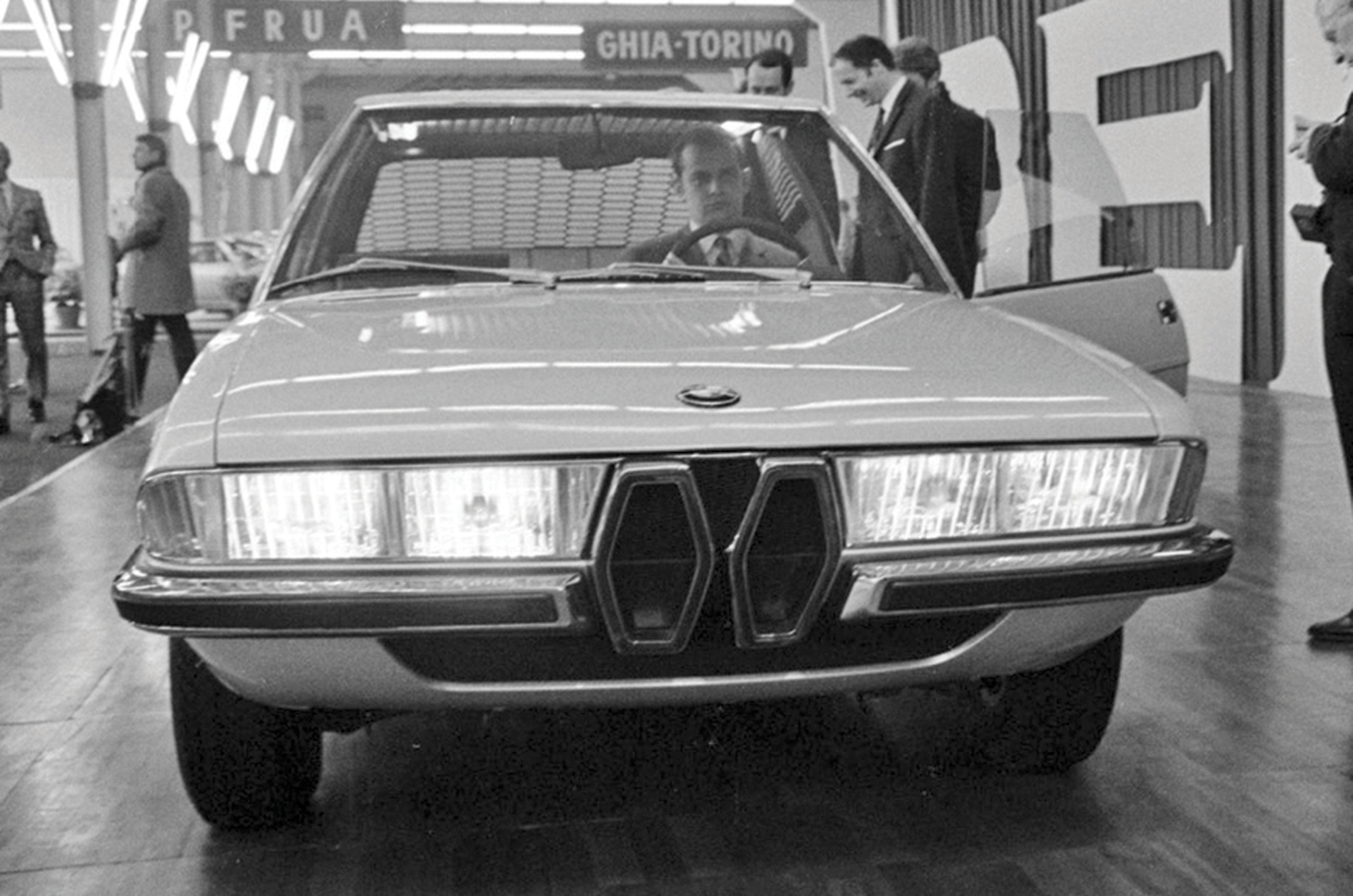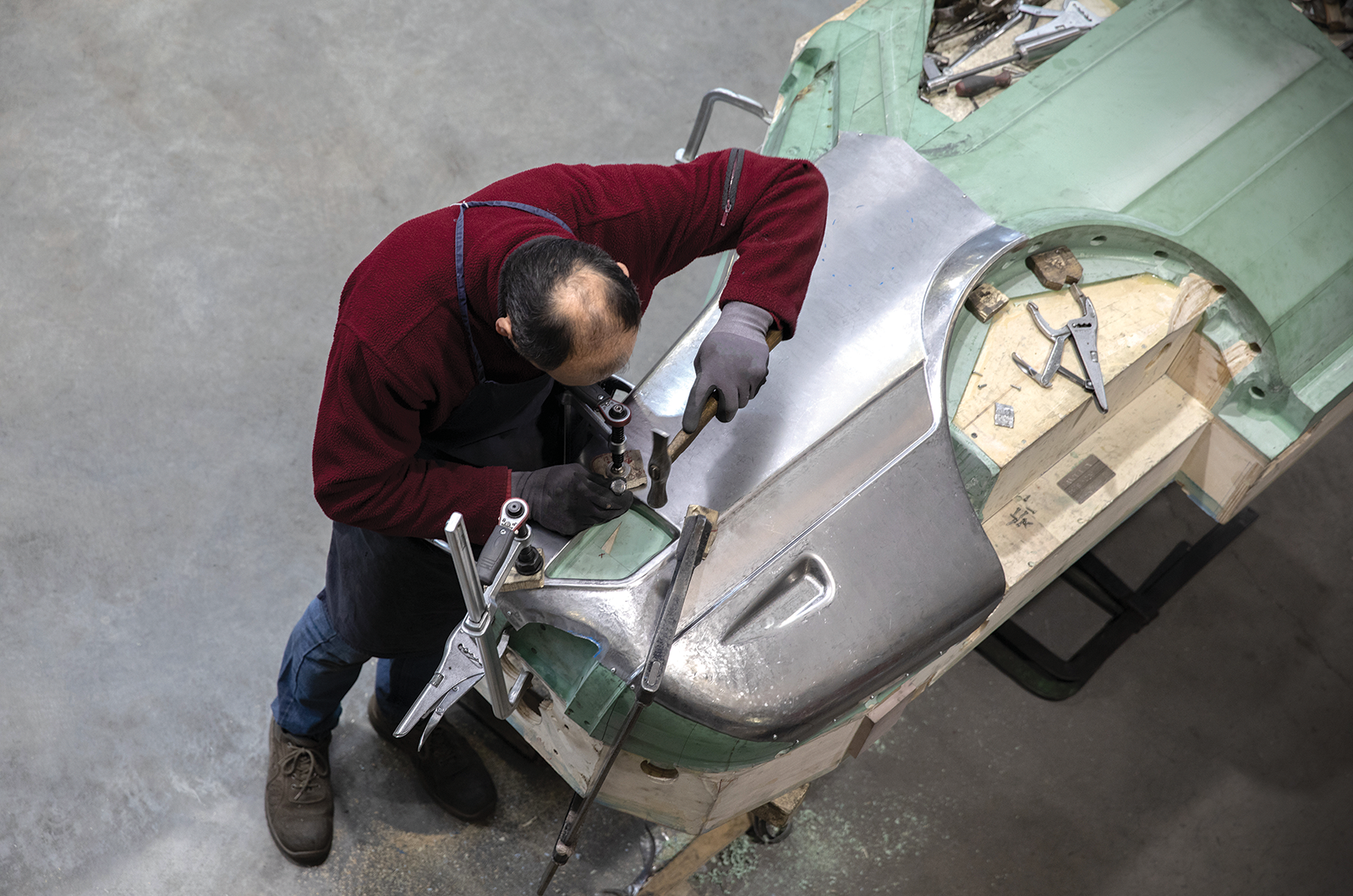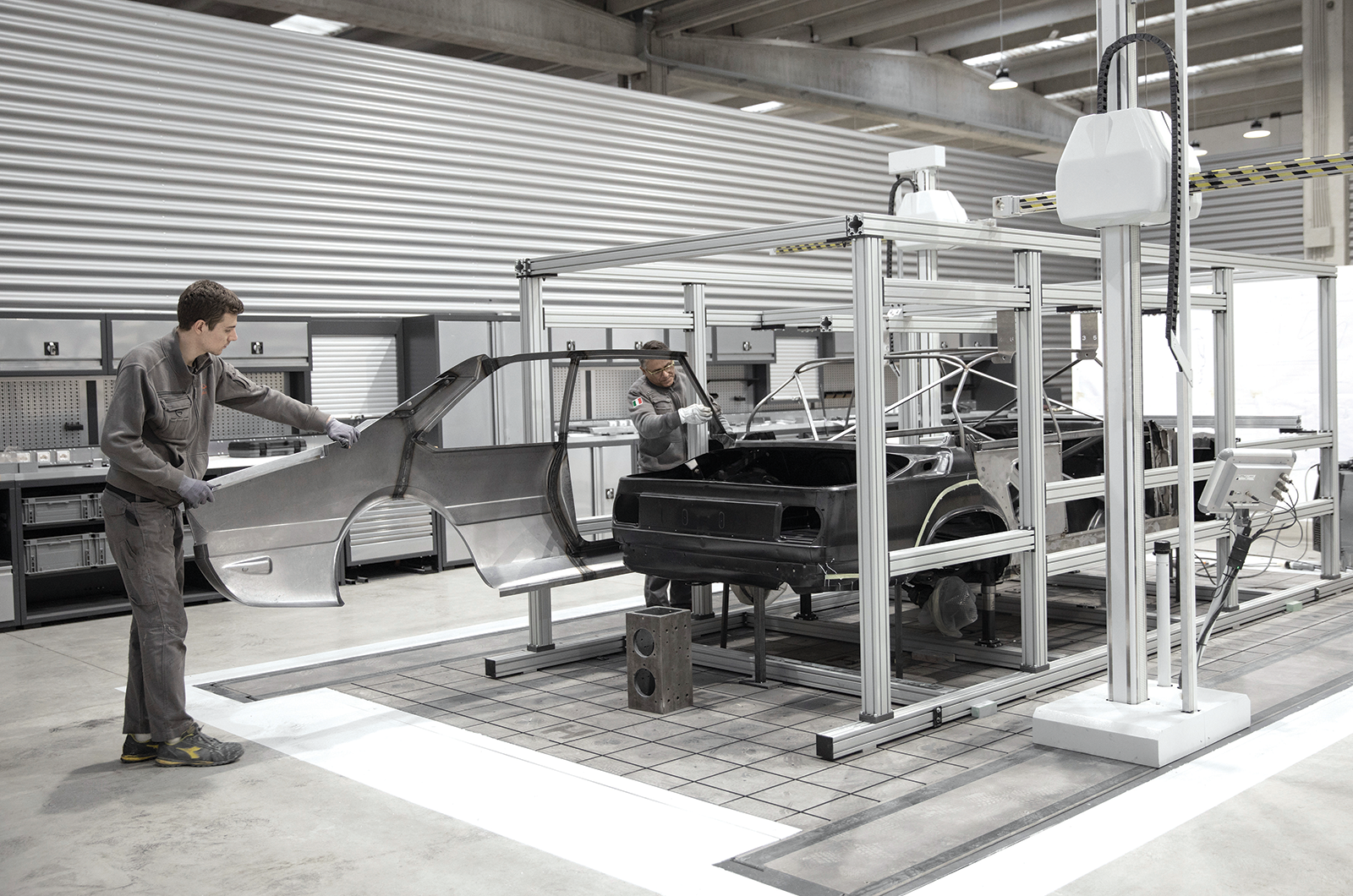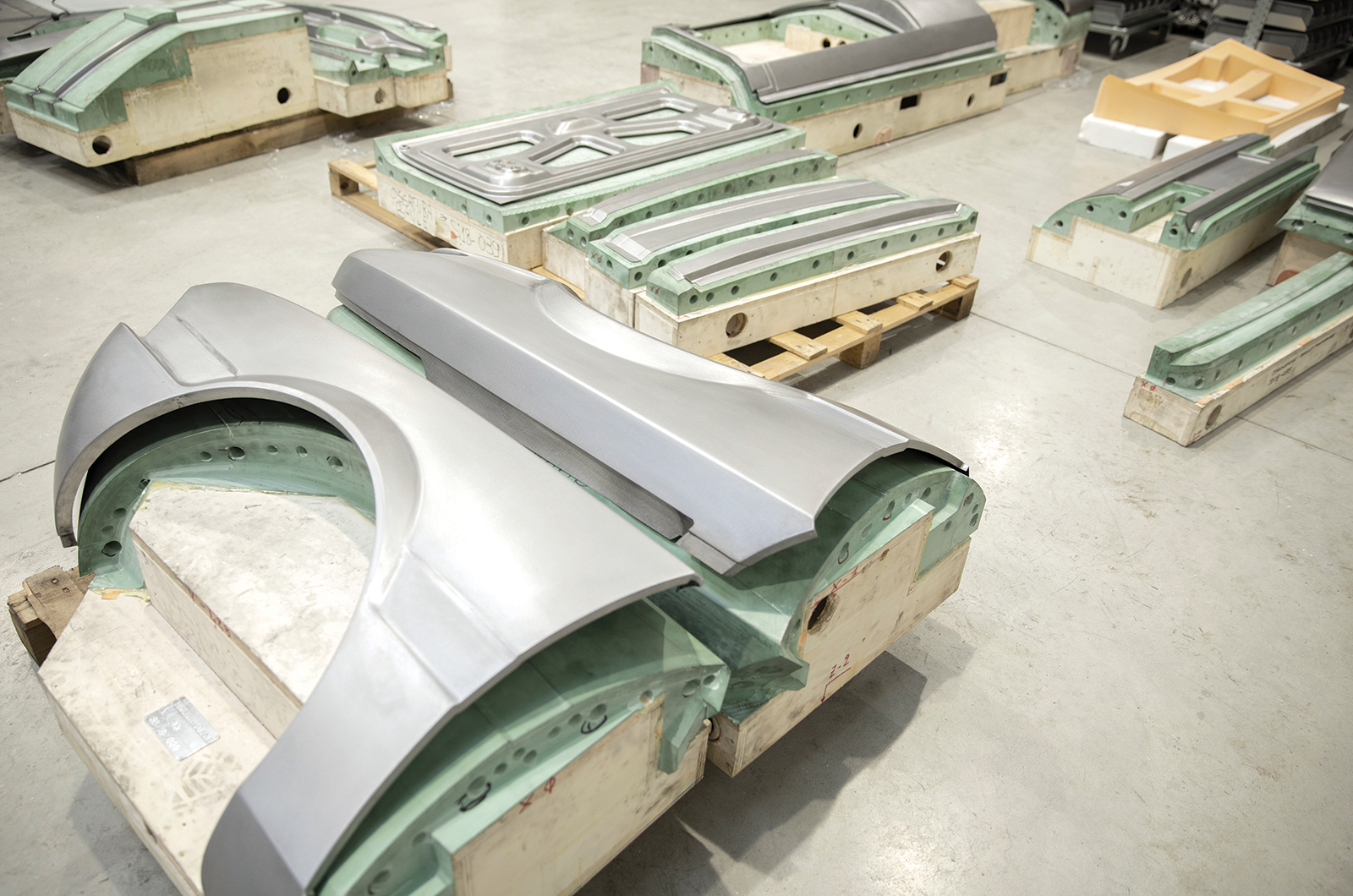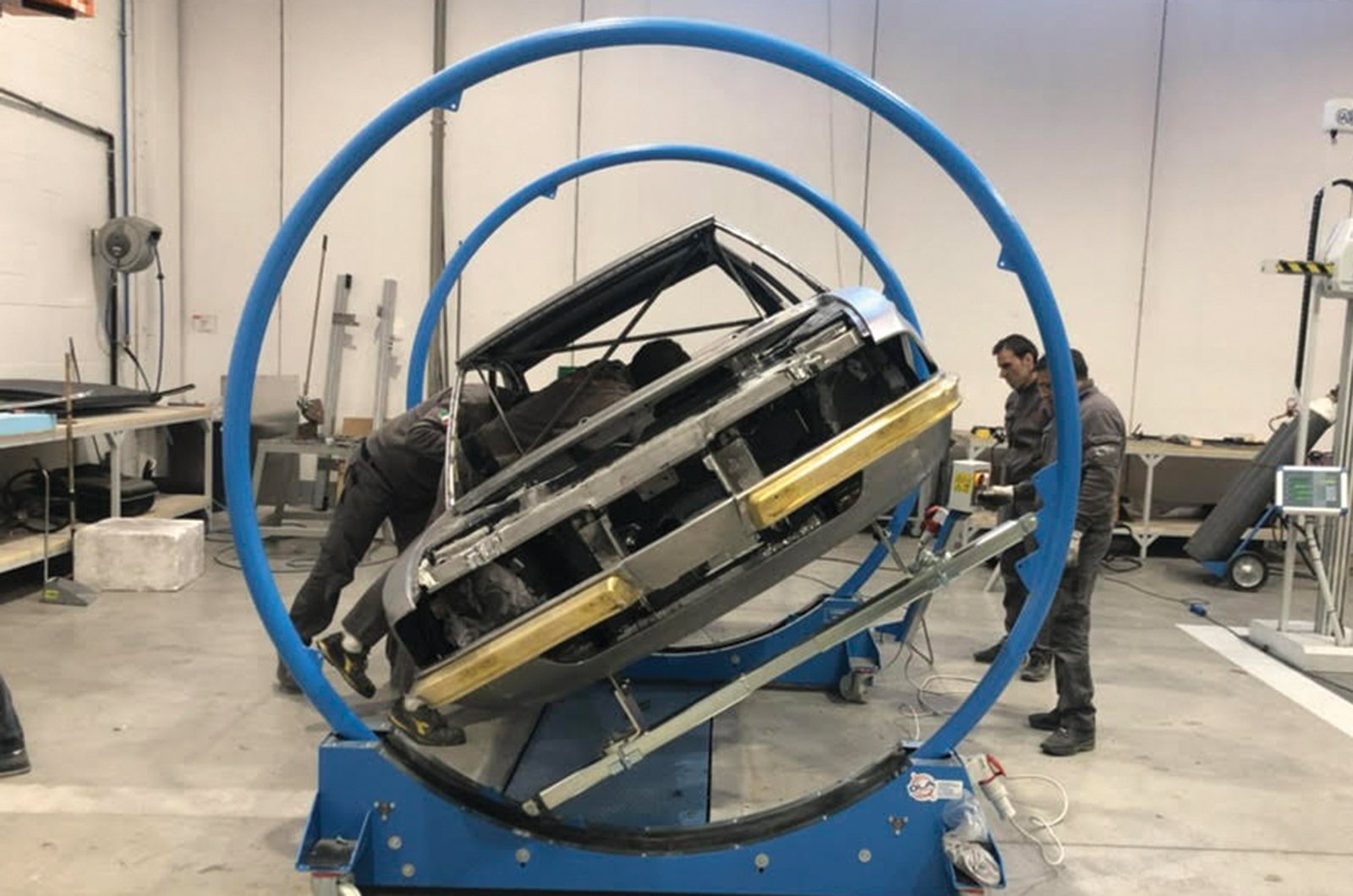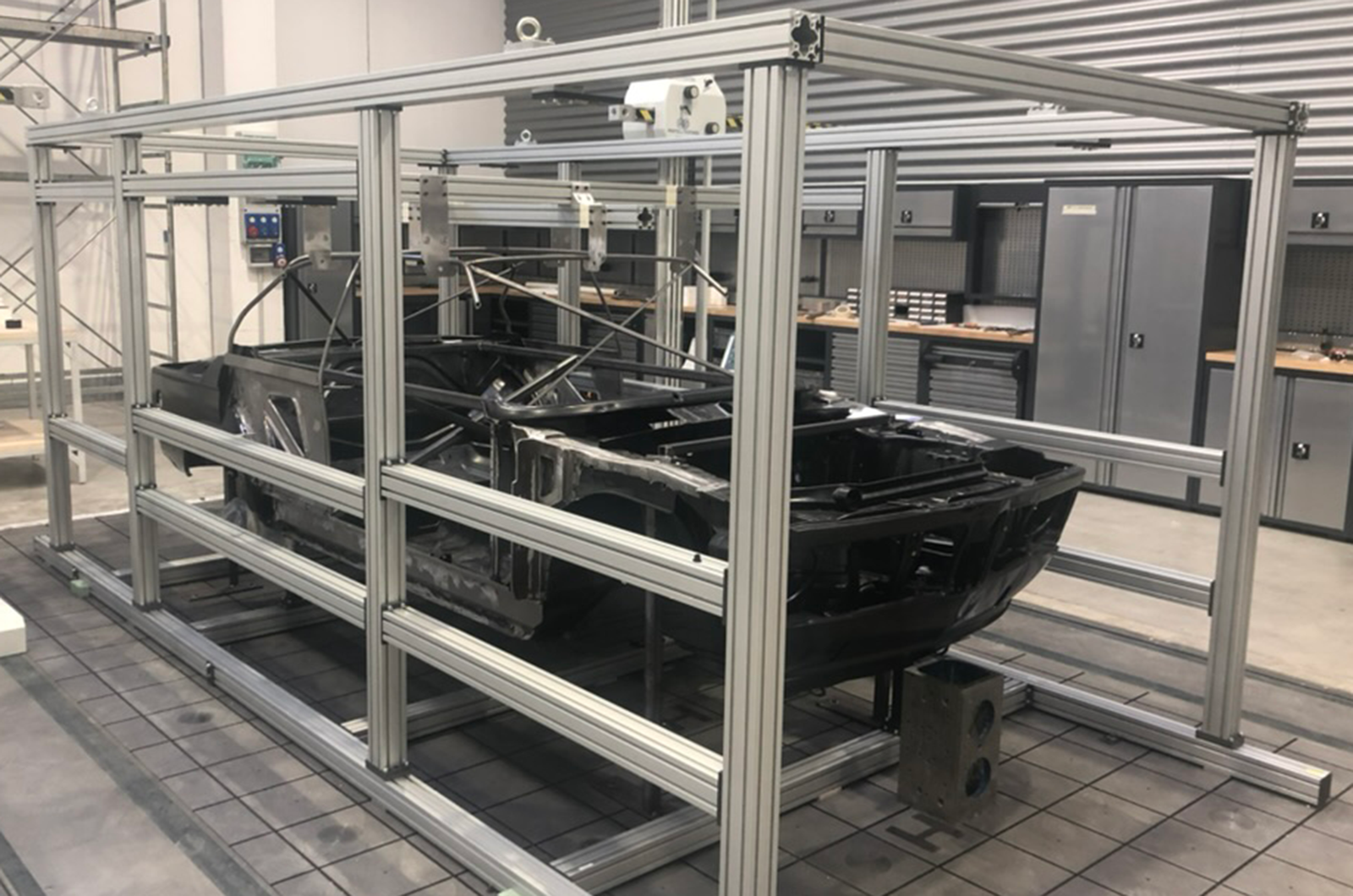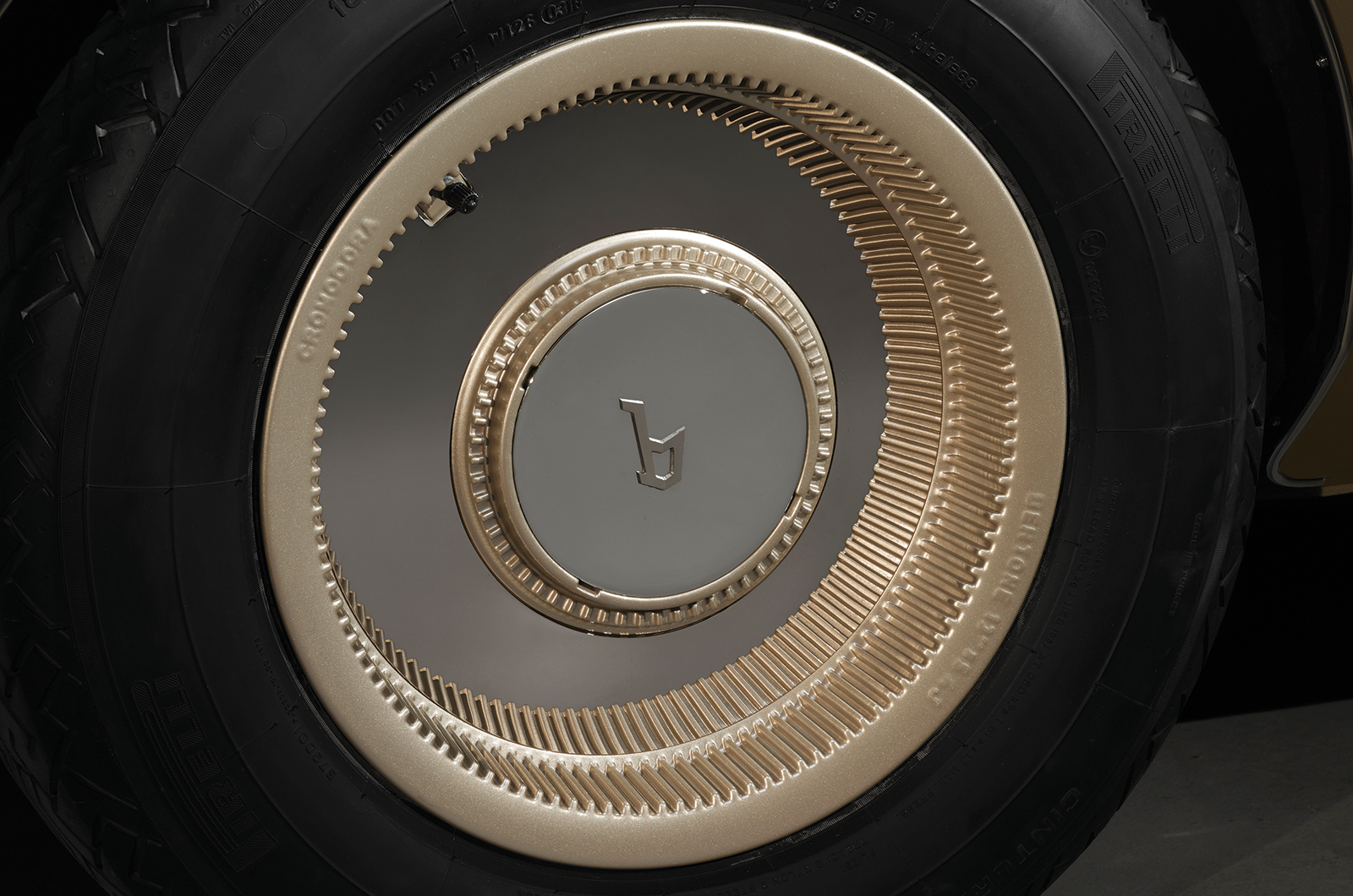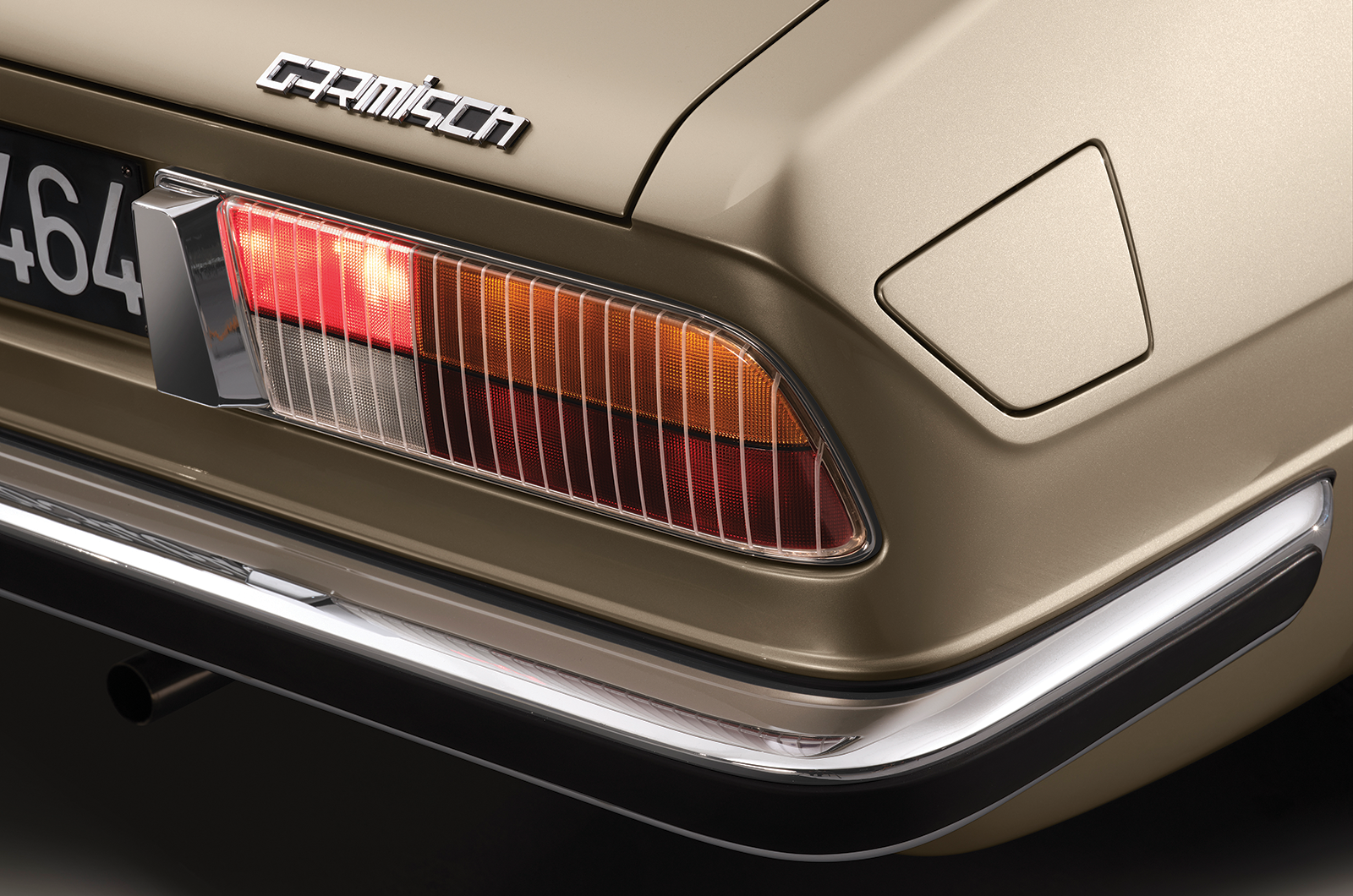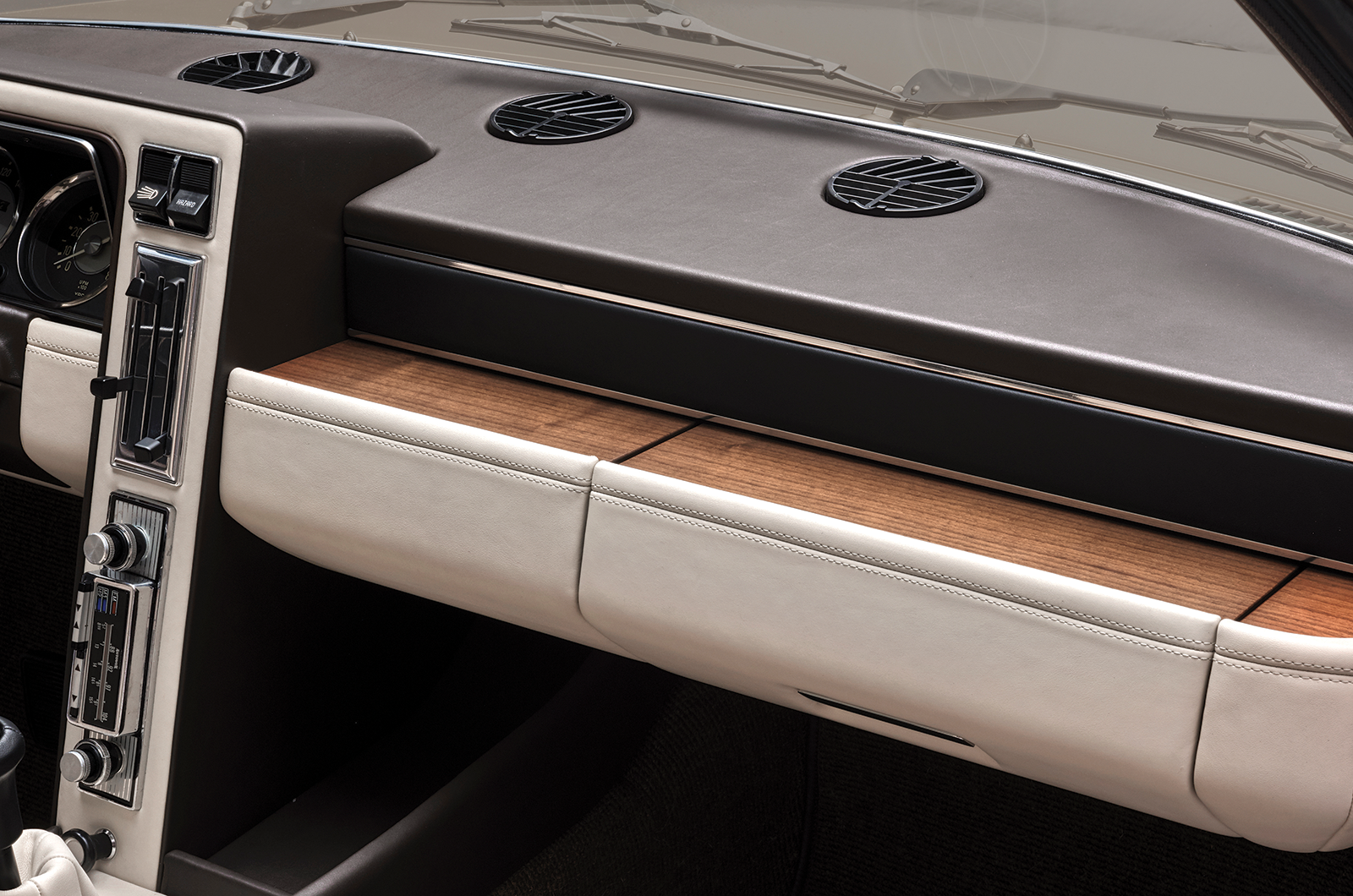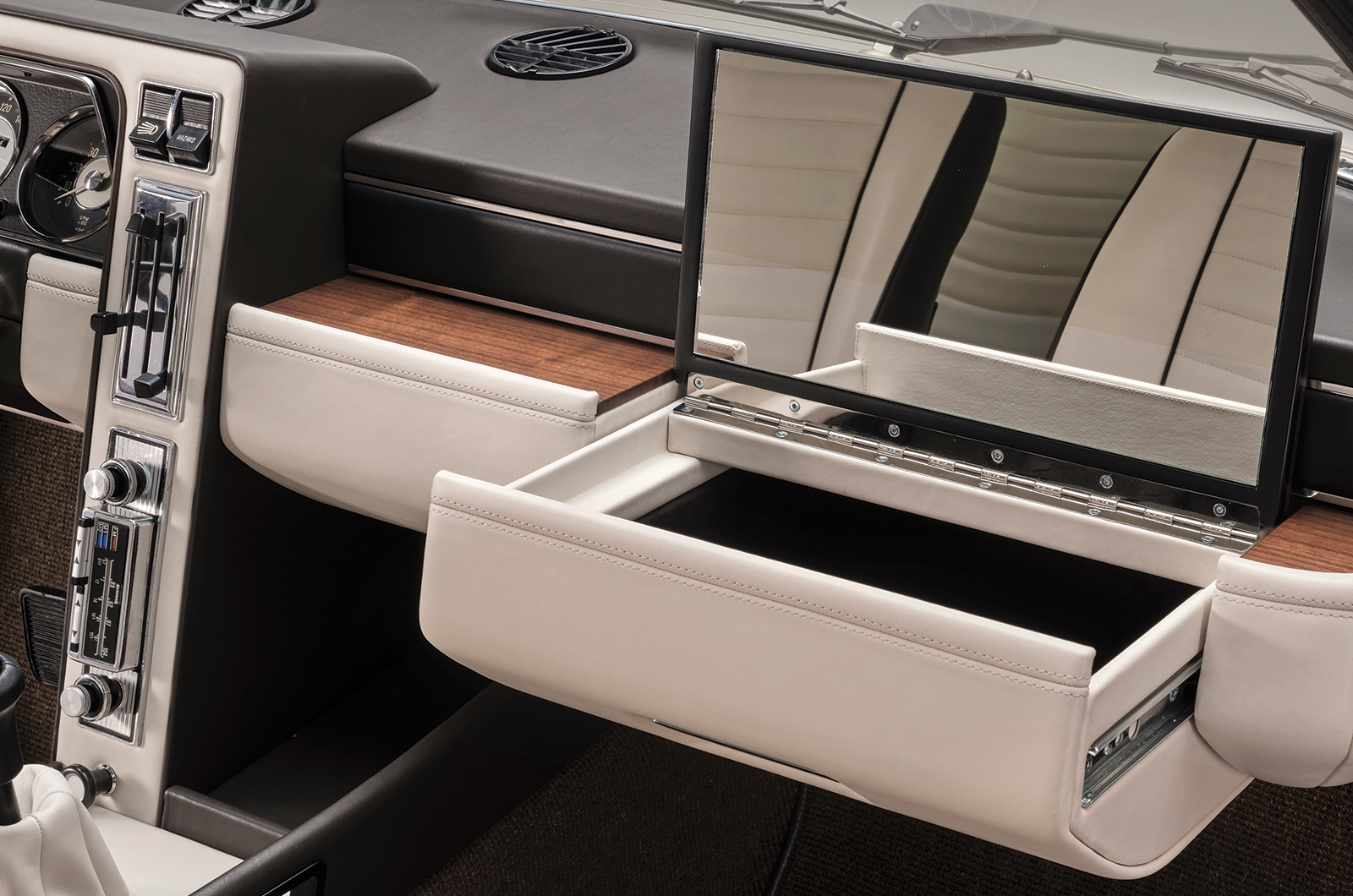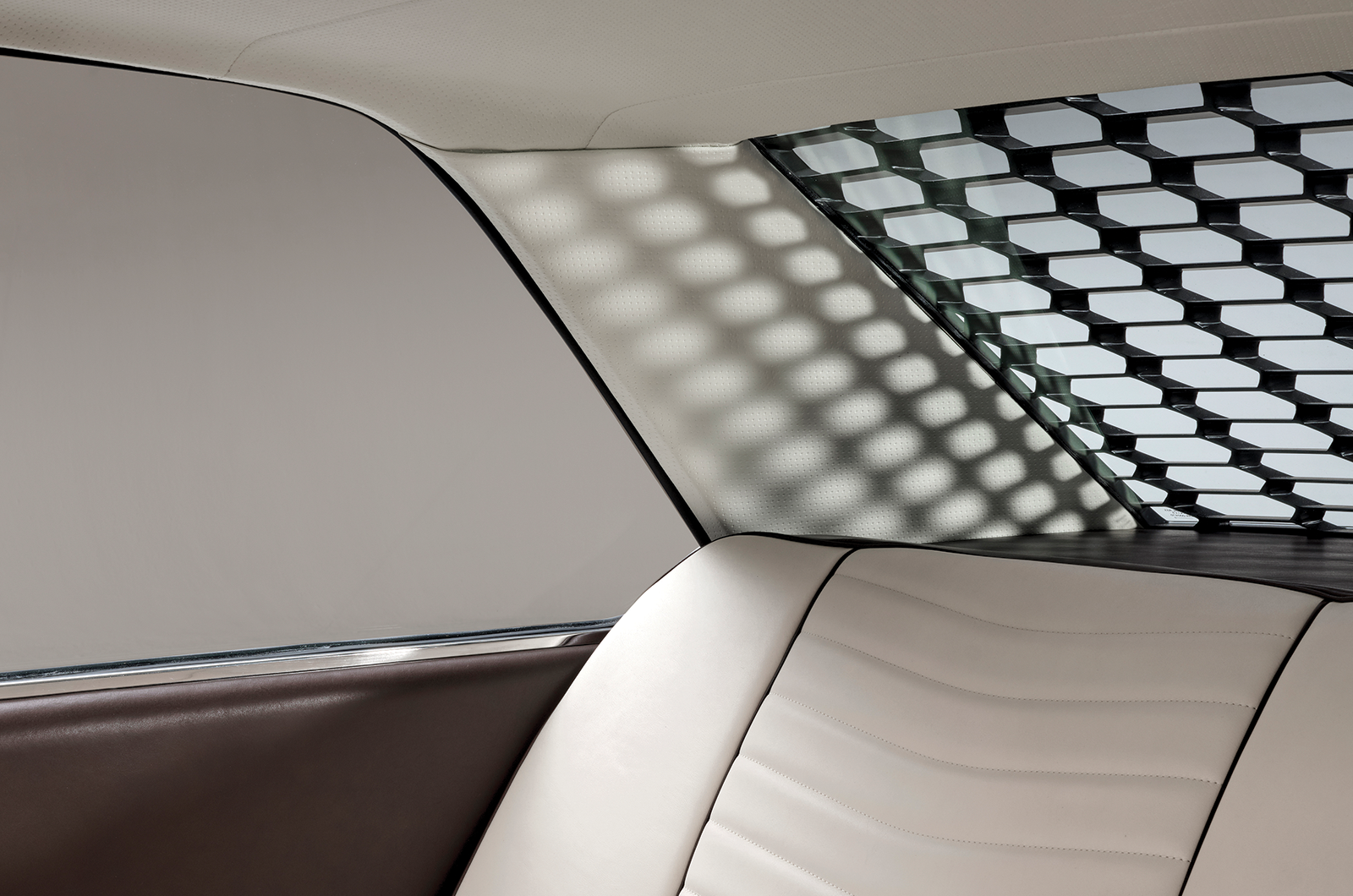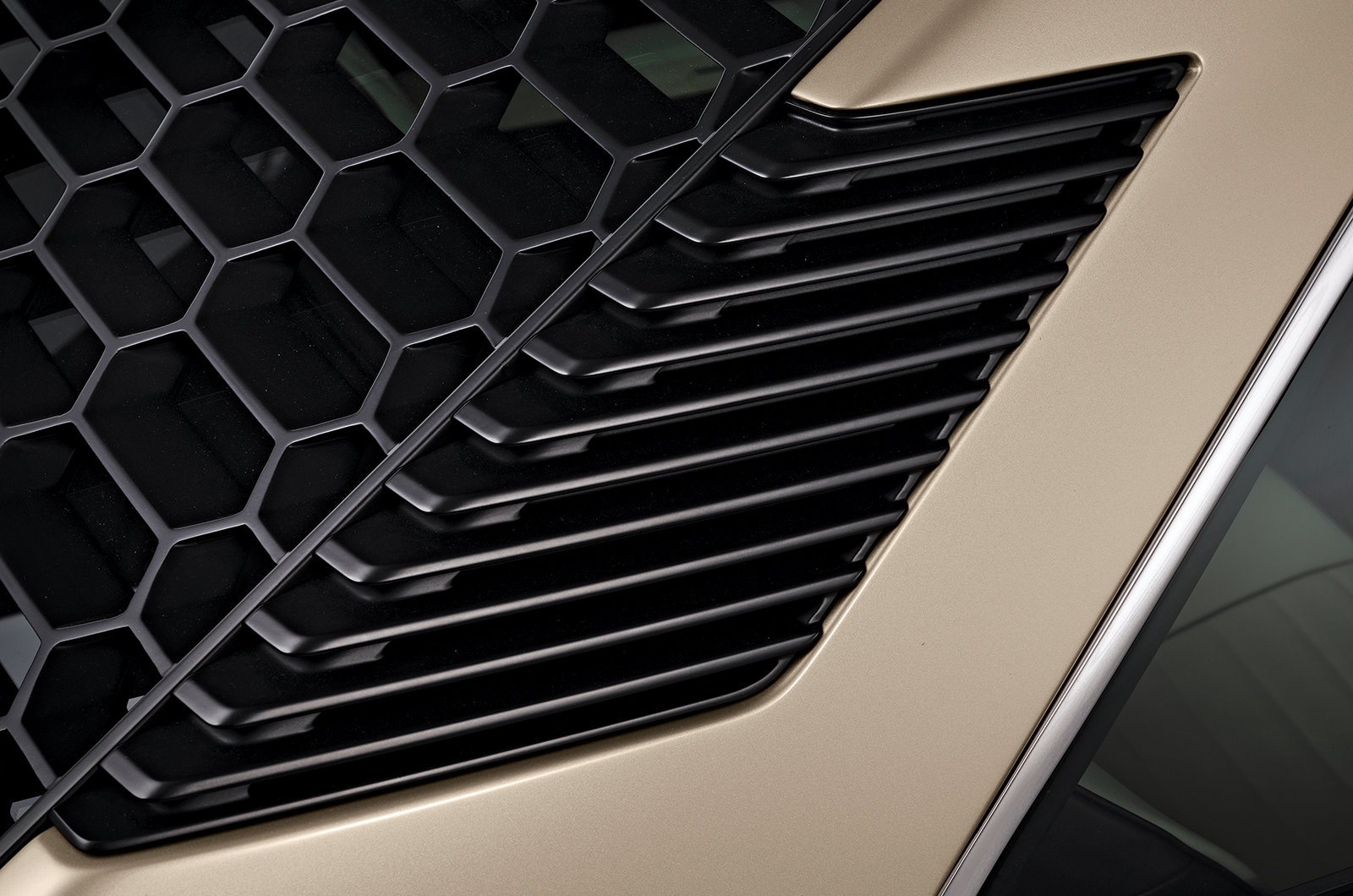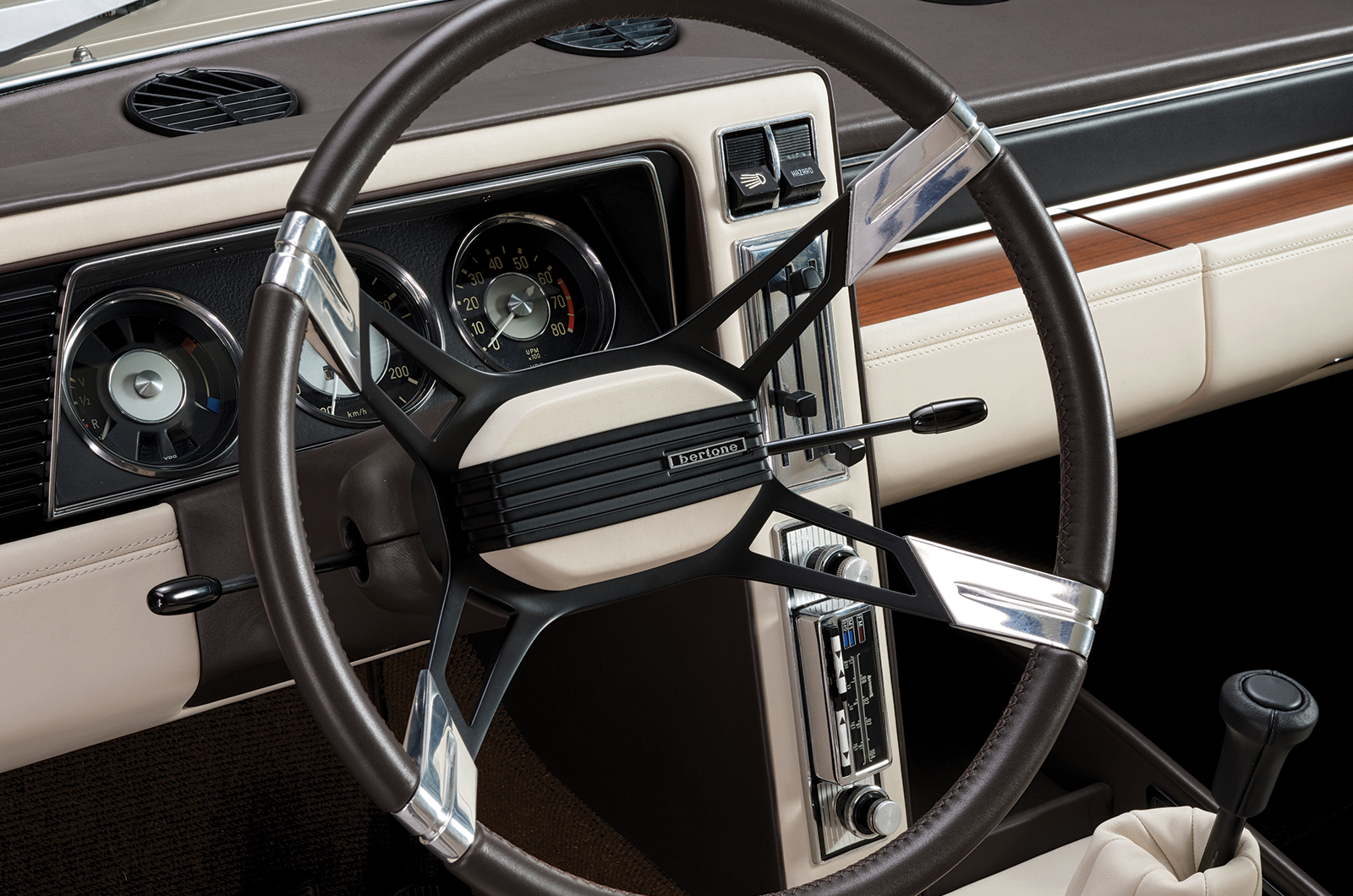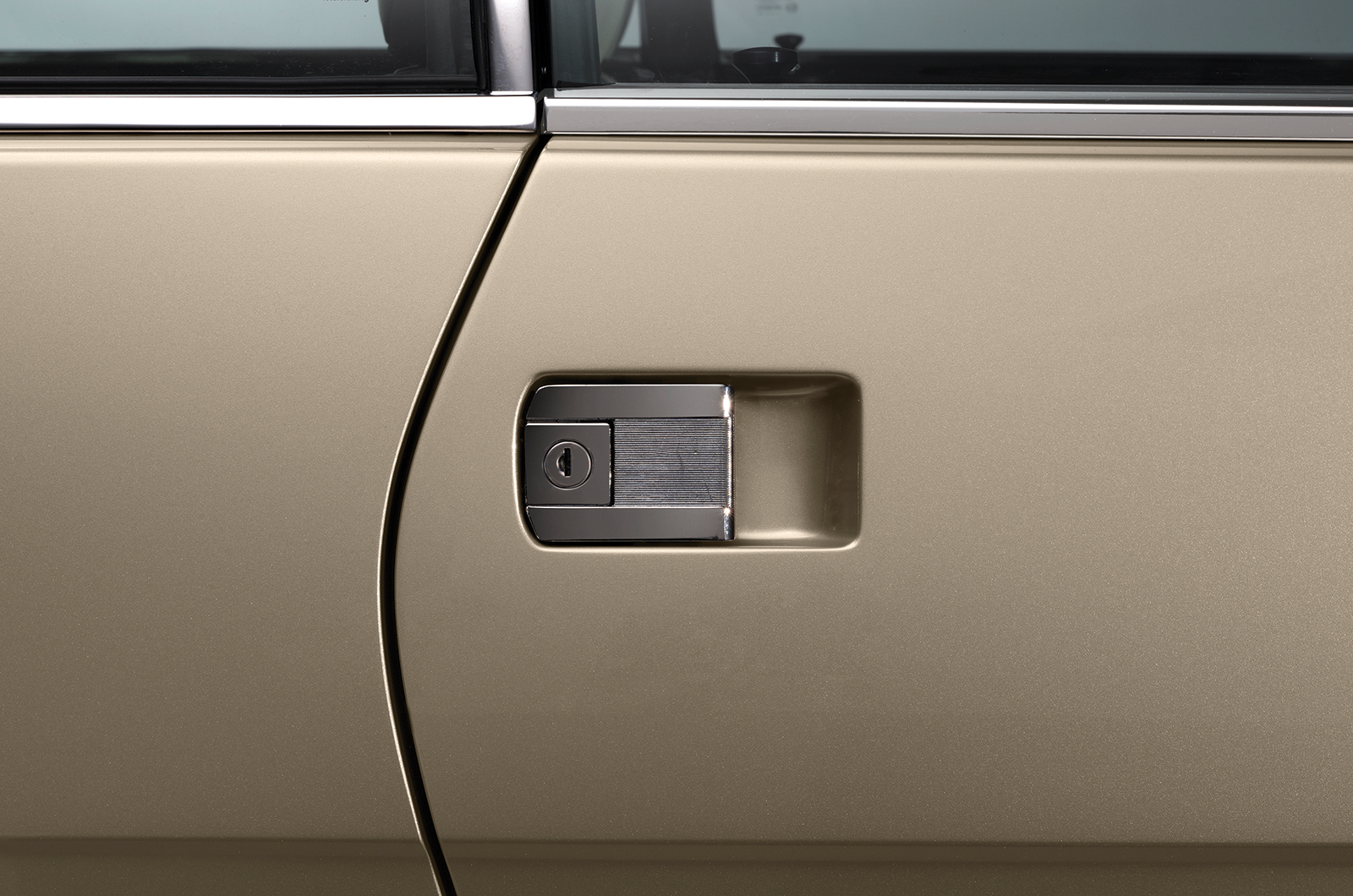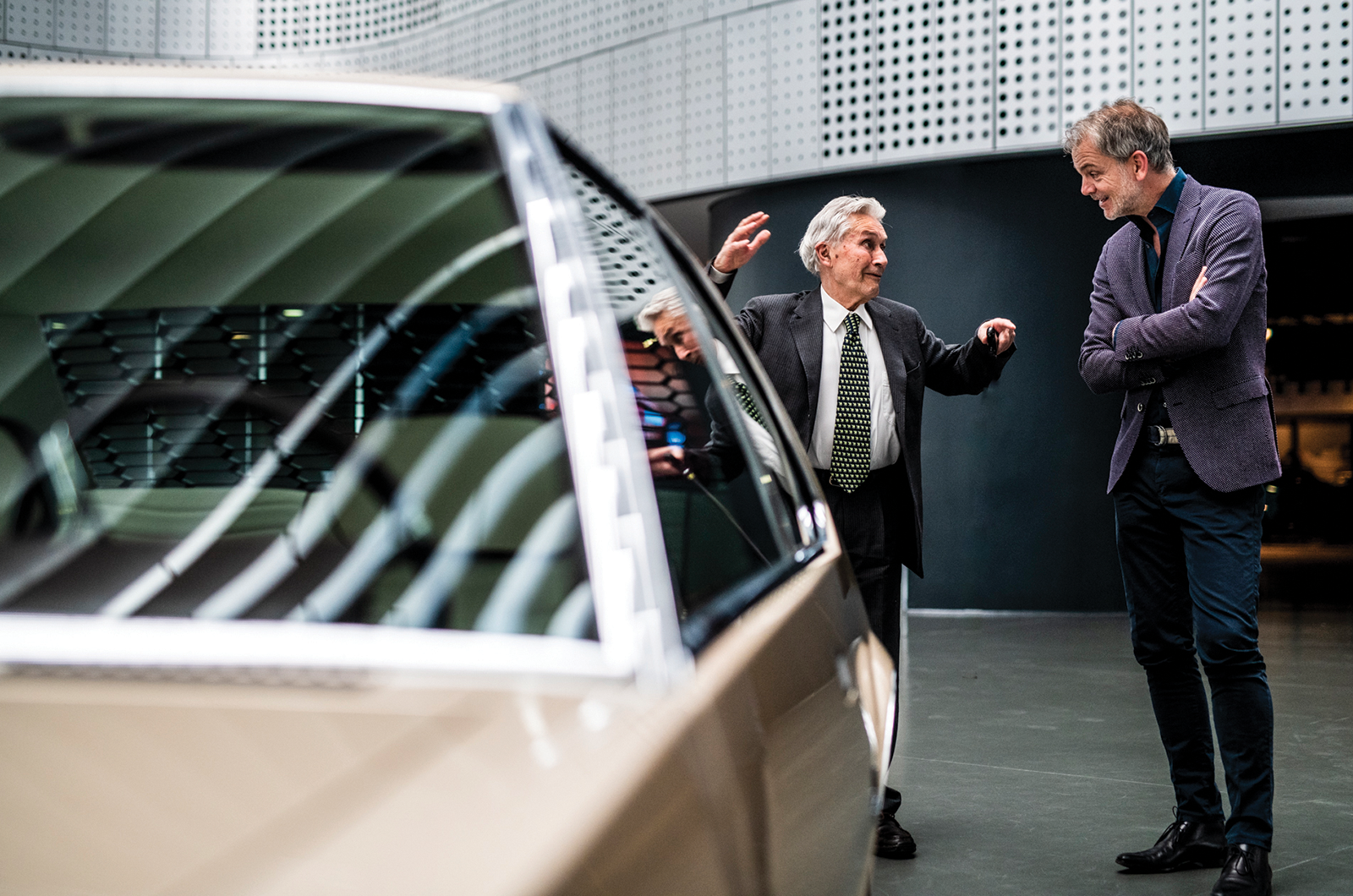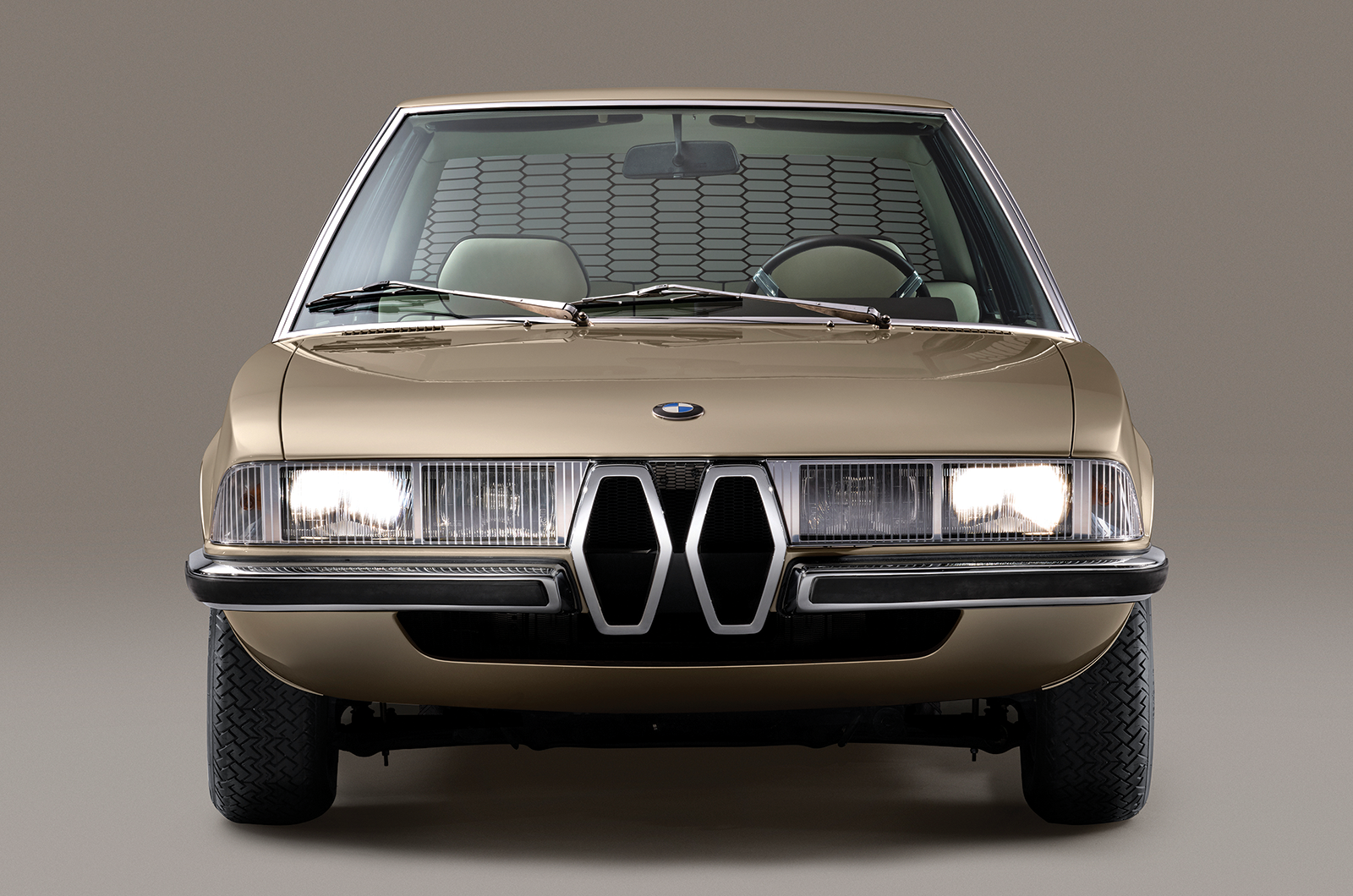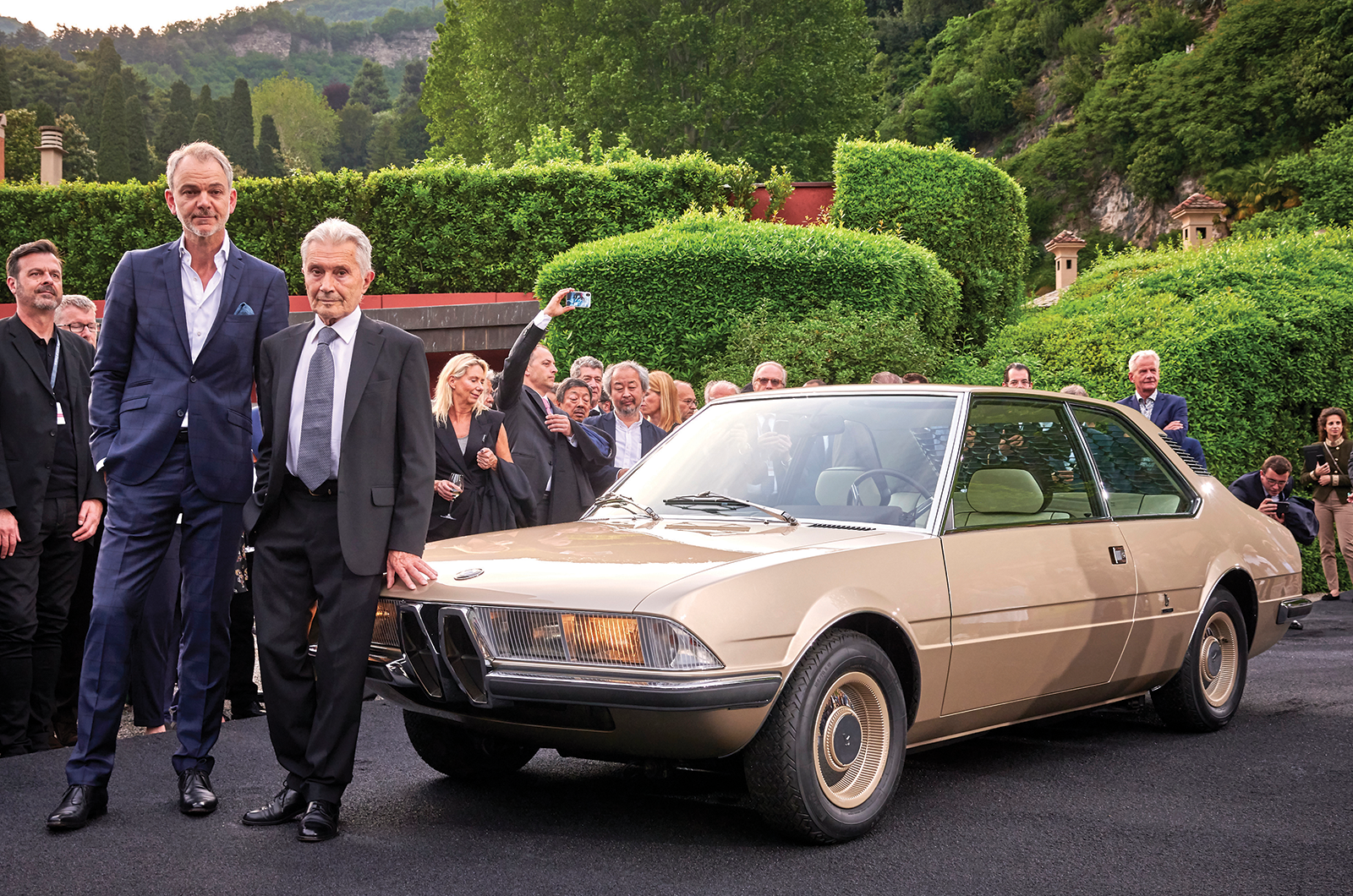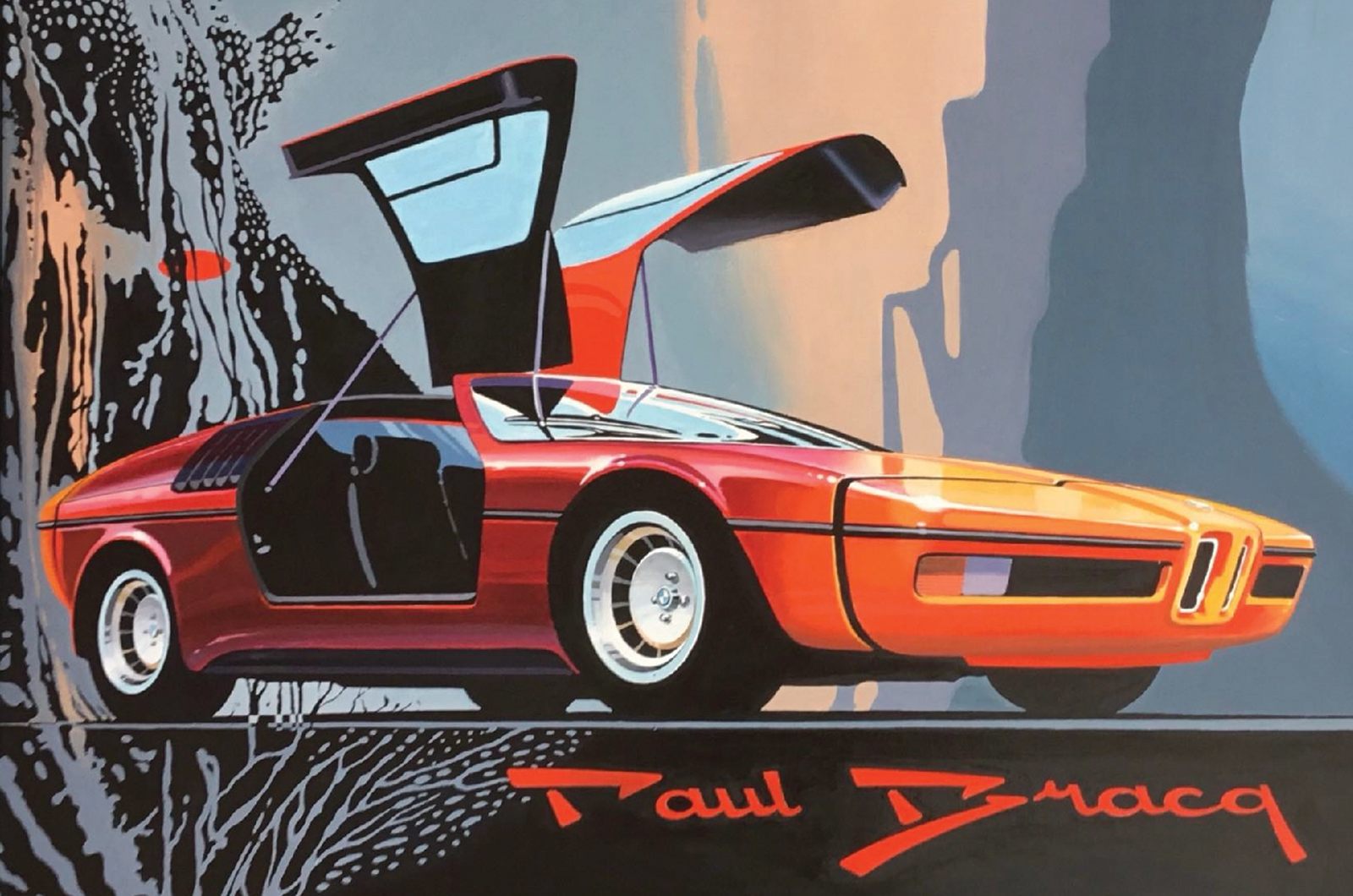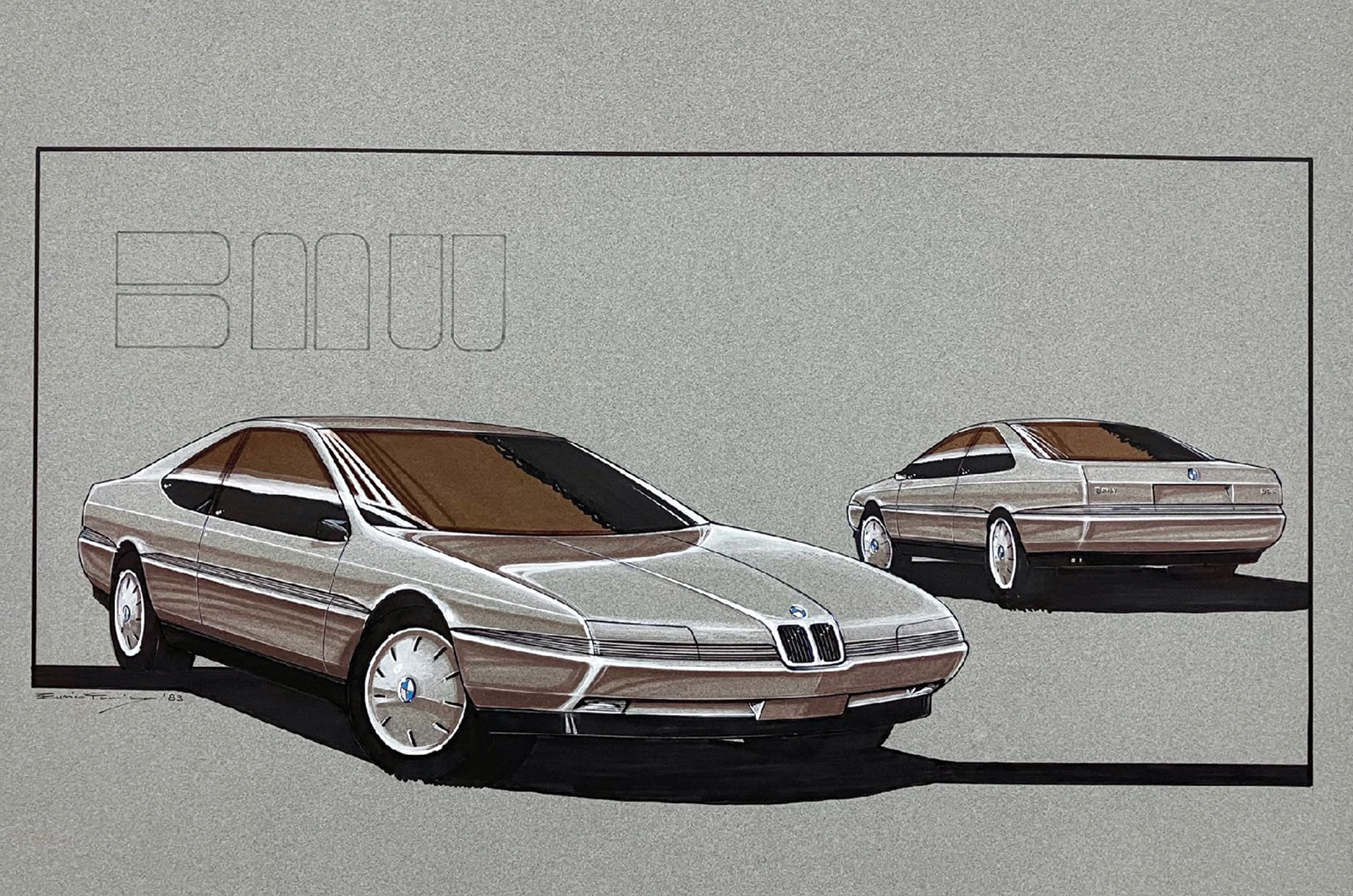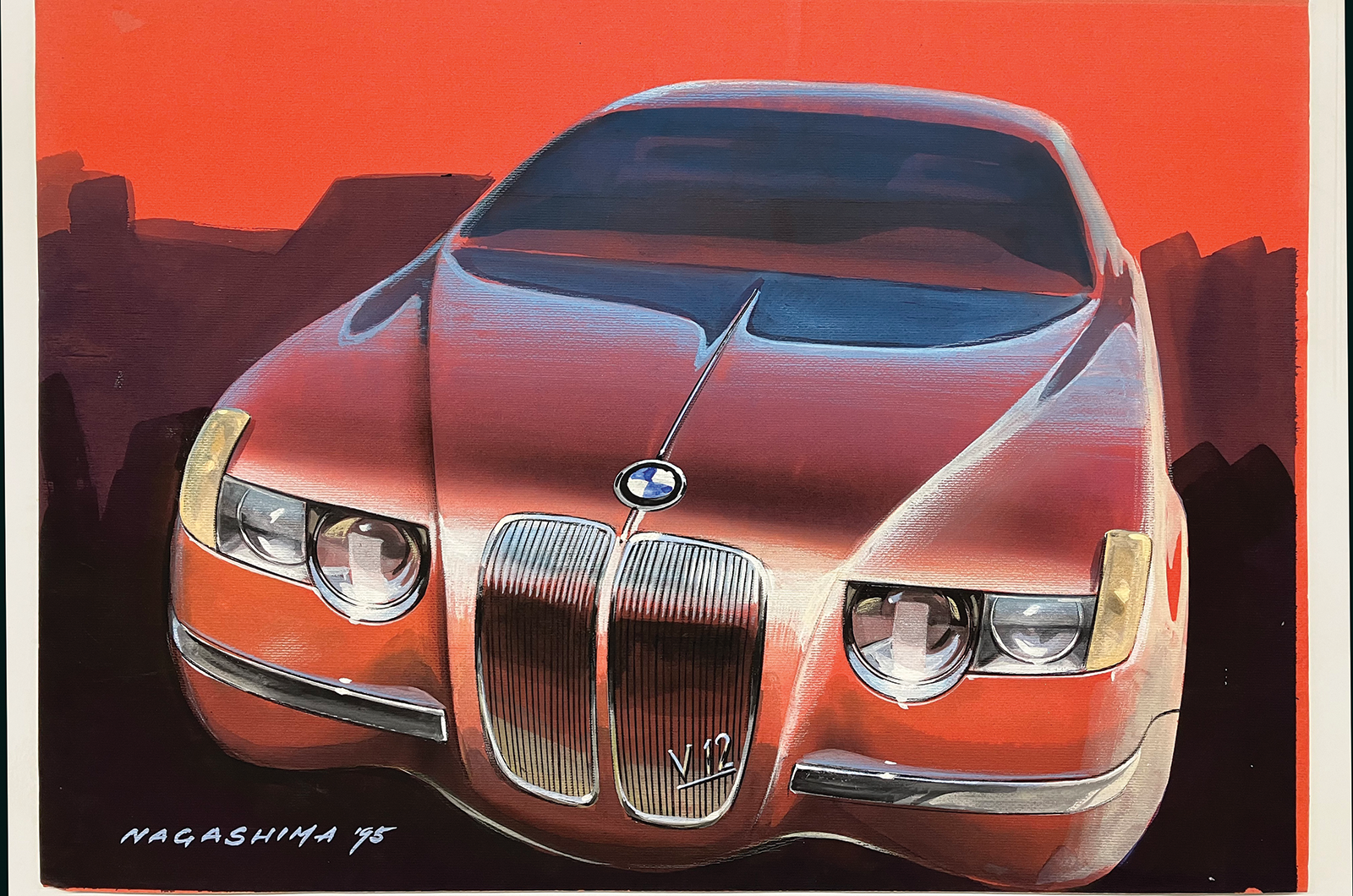Thankfully, Superstile was able to suspend the 2002 in a specially built cage while the exterior was picked apart and drastically reconfigured under the skin for the longer doors.
Without the cage’s girdle-like support, the semi-naked 2002, devoid of so much structural metalwork, might have collapsed in on itself.
BMW designers and engineers dropped in on the project and found themselves amazed at the quality of Superstile’s craftsmanship – to the extent that it led to a reappraisal of today’s practice of using composite materials to build show cars and an acknowledgment that good, old-fashioned metal could still be a basis for a fully functioning one-off.
Adrian van Hooydonk reveals the finished BMW Garmisch to Marcello Gandini in the marque’s studio
The finished Garmisch, the second of its name, was duly completed on time and on budget in early 2019.
As planned, the reincarnated Garmisch was driven on to the centre stage at the 2019 Concorso d’Eleganza Villa d’Este.
The concept car sparkled in the Italian sun, looking every bit the ’70s design star it was.
But there was one unrealised wish for a hopeful Sebastian Höpfl: “With all those millionaire owners of classic cars in attendance there, we hoped someone would step forward and say, ‘Oh, actually, I’ve got the original Garmisch – it’s tucked away in my garage’. But no one did.”
“We wanted to create a coupé that was faithful to BMW’s design language, but also more dynamic and provocative”
The BMW design team’s ultimate detective story was drawing to a close, but there is a sequel to the tale.
Superstile had proven that it could make a fully functional, bespoke metal-bodied car from scratch.
“Everything worked – wipers, lights, the lot,” says Sebastian.
“Well, except the radio, which always made a crackly noise. But I’d happily drive our Garmisch across the Alps.”
The BMW Garmisch tribute was unveiled at the Concorso d’Eleganza Villa d’Este in 2019, almost 50 years after the original car was revealed
He might never get that chance, but Sebastian was reunited with Superstile five years later.
In early 2023, the Italian company built the BMW Concept Touring Coupé – a one-off two-door intended to wow the crowds at that year’s Concorso d’Eleganza event.
The Turin coachbuilder took the same skills, hammers and craftspeople to pick apart a Z4 roadster and reclothe it with unique sheet-metal, creating a BMW in the style of Z3 and Z4 Coupés past, blended with a contemporary sense of Italian couture.
Munich and Turin might be an hour’s flight apart, but their spirit of creative co-operation is clearly as close as ever.
Images: BMW Group
BMW by Design is available standalone (for £79.95) or as part of a three-book set called BMW Behind The Scenes (for £239.95). The set includes BMW’s Hidden Gems, which contains the full version of the Garmisch story, and BMW Art by Design. Both book and set are available direct, with free p&p, from stevesaxty.com/bmw
BMW design secrets
The BMW Turbo concept was designed with production in mind
BMW Turbo: an orange flash of inspiration
Former design chief Paul Bracq explained how orange became a BMW signature.
Bracq once had a studio by an airstrip used by the French Air Force, whose training aircraft had dayglo orange wingtips.
After it swapped to using decals, he asked for the surplus paint.
When he designed the ’72 BMW Turbo, he had it painted the Ruby Red of his Porsche 356 with the deformable plastic bumpers in the old orange paint to emphasise their safety credentials.
BMW called the E25 Turbo a ‘safety car’, but Bracq is clear that it was always intended for production.
BMW turned down Pininfarina’s 6 Series design and the idea morphed into the Alfa Romeo 164
Alfa Romeo 164: why waste a good idea?
At a quick glance, this is obviously the Pininfarina-designed Alfa Romeo 164.
Except that it isn’t: take a second look and there is a BMW twin-kidney grille on the front.
The Italian design studio would often offer a design around to a second client when the first turned it down.
Had BMW selected Pininfarina’s suggested design for the new 6 Series in the early 1980s, then Alfa Romeo might have been out of luck.
A heavily modified BMW Z1 was considered for an attempt at the Pikes Peak hillclimb
BMW Z1 concept: F1-powered Pikes Peak racer
BMW Technik’s 1980s chief Harm Lagaay realised that the 1.5-litre unit used in the contemporary F1 car, being based on the ’02 M10 block, could fit in a road car.
Okay, it needed revving to make its 800bhp, but it was ideal for a Pikes Peak racer.
Sketches of the single-seat, F1-engined Z1 were drawn and a wind-tunnel model made, but the idea didn’t progress further.
Characteristics from this 1990s BMW 2002 concept filtered down to the 2000s 1 Series
BMW 2002 reborn: back from the dead
In the ’90s, BMW engineers were examining how to use composites in production cars by stamping out panels in a special glassfibre.
At the same time, designer Andreas Zapatinas was sketching a 2002-style two-door.
The ideas met in a 3 Series Coupé rebodied as a light (sub-1000kg), no-frills car.
It evolved further into this lifelike ‘2K2’ by Chris Chapman – whose winning design for the 1 Series tipped its hat to this model.
BMW wanted to make the 7 Series a Rolls-Royce rival
BMW 7 Series: the Rolls-Royce from Munich
Back in the 1990s, BMW started looking at how it could move its model range – and especially the 7 Series – upmarket.
The designers sketched out what the range might look like for the ‘Zukünftige BMW Familie’ (ZBF, or future BMW family).
This drawing, by Joji Nagashima, flaunts a V12 badge with pride on its huge, imposing grille – almost feeling like a ‘9 Series’ or something even grander.
This concept became known as the ZBF after it was built into a fully drivable one-off.
Enjoy more of the world’s best classic car content every month when you subscribe to C&SC – get our latest deals here
READ MORE
C&SC presents… BMW Legends is out now
21 BMWs that were never made
Bond’s BMWs: Z3, Z8 and 750iL on track
Driving John Surtees’ BMW 503 Cabriolet
